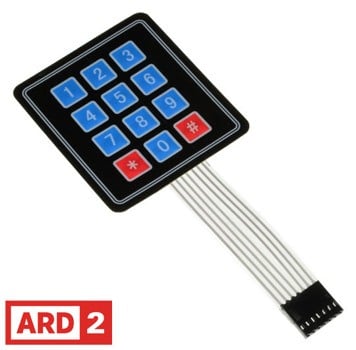Recognizing Membrane Layer Switches Over: The Secret to Sturdy and Reliable Controls
Membrane switches represent an essential facet of modern-day user interface style, mixing performance with durability in numerous applications. As we discover the ins and outs of membrane layer switches, it comes to be clear that their duty in enhancing control systems is both profound and complicated, raising concerns concerning how best to leverage their capacities in future advancements.
What Are Membrane Layer Switches?
Membrane layer buttons are a sophisticated service in the realm of user interface modern technology, combining functionality and style flawlessly. These gadgets work as an interface between customers and electronic systems, incorporating a number of parts into a small layout. Usually created from flexible, thin layers of products, membrane switches are made to reply to touch, allowing customers to communicate with equipment and digital devices efficiently.
The primary elements of a membrane button consist of a printed circuit layer, visuals overlay, and a spacer layer that avoids unplanned activation. The graphic overlay can be customized to reflect brand identification or individual preferences, enhancing aesthetic appeals while ensuring use. Membrane switches are frequently used in different applications, consisting of clinical gadgets, customer electronic devices, and industrial devices, owing to their durability and resistance to environmental factors such as moisture and dust.
Among the essential benefits of membrane layer switches is their capability to stand up to damage, making them optimal for high-traffic atmospheres. Additionally, they are lightweight and call for very little space, allowing for innovative styles in product growth. Overall, membrane switches represent a sensible and efficient choice for modern electronic interfaces, weding modern technology with user-centric design concepts.

How Membrane Layer Switches Job
The operation of membrane layer switches over joints on an easy yet effective system that translates user input into electronic signals. When an individual presses the button, the top layer flaws, enabling a conductive element in the circuit layer to make contact with a corresponding conductive pad on the underside of the visuals overlay.
The layout of membrane buttons can vary, but they often incorporate domes or tactile aspects to give comments to the individual, enhancing the total experience. The materials used in membrane layer buttons, such as polyester or polycarbonate, contribute to their longevity and resistance to ecological variables, including dampness and dust. Additionally, the printed circuits are typically enveloped, which shields them from deterioration gradually.

Advantages of Membrane Buttons
Among the key advantages of membrane switches is their adaptability in layout, allowing them to be customized to fulfill specific user needs and aesthetic requirements. This adaptability includes numerous markets, where various forms, sizes, and shades can be used to improve customer communication and visual appeal.
Additionally, membrane buttons are understood for their resilience. Constructed from robust materials, they are resistant to dust, dampness, and physical wear, which dramatically extends their life expectancy contrasted to standard mechanical switches. This sturdiness makes them particularly appropriate for high-traffic atmospheres and applications calling for long life.

Furthermore, membrane switches use a structured account, leading to a thinner design that can be incorporated into numerous devices without including bulk. This feature not only boosts the visual charm but likewise contributes to a much more ergonomic item layout.

Applications of Membrane Layer Switches
Versatile and straightforward, membrane switches find applications throughout a large range of sectors, including clinical tools, consumer electronic devices, and industrial equipment. In the medical field, these switches are essential to devices such as analysis tools, client tracking systems, and infusion find this pumps, where reliability and ease of cleansing are essential. Their capacity to keep and withstand severe settings functionality makes them suitable for such applications.
In consumer electronics, membrane buttons are used in items like microwaves, cleaning equipments, and push-button controls - membrane switch. Their sleek layout permits instinctive interface, enhancing the total customer experience while offering resilience and resistance to tear and use
Industrial tools likewise gains from membrane buttons, particularly in control panels for equipment and automation systems. These buttons provide security versus dirt and dampness, guaranteeing regular performance in challenging atmospheres. In addition, their customizable functions permit producers to tailor them to certain functional demands, improving efficiency and performance.
Picking the Right Membrane Layer Switch Over
When picking a membrane layer button, it is important to consider different factors that influence performance and suitability for particular applications. The key considerations include ecological conditions, responsive comments, durability, and design specs.
First, assess the operating atmosphere; buttons revealed to moisture, chemicals, or extreme temperature levels call for details materials to make sure longevity and capability. Next off, review the requirement for tactile responses. Relying on user interaction, some applications might benefit from a tactile action to confirm activation, while others may favor a non-tactile style for aesthetic factors.
Durability is another crucial factor; membrane layer switches need to be developed to stand up to regular usage, impacts, and abrasion. Guarantee the picked switch can endure the anticipated lifecycle, especially in high-usage situations.
Conclusion
Finally, membrane switches work as essential parts in the style of resilient and reliable control systems throughout numerous sectors. Their small layout, incorporated with durable building and construction and adjustable functions, enhances customer communication while making certain longevity in requiring settings. The convenience of membrane layer switches permits customized services that fulfill details operational requirements, reinforcing their significance in modern innovation. membrane switch. As markets click this proceed to develop, the relevance of integrating efficient membrane switch solutions can not be overstated.
Membrane layer switches represent a crucial element of modern-day interface style, blending functionality with durability in different applications.Membrane layer buttons are an innovative service in the world of individual interface innovation, incorporating performance and design flawlessly. Normally created from flexible, thin layers of materials, membrane layer buttons are made to react to touch, allowing customers to communicate with machinery and digital tools successfully.
The layout of membrane buttons can vary, but they commonly include domes or tactile elements to supply feedback to the user, boosting the general experience.In final thought, membrane switches serve as necessary parts in the style of check this reputable and durable control systems throughout various industries.